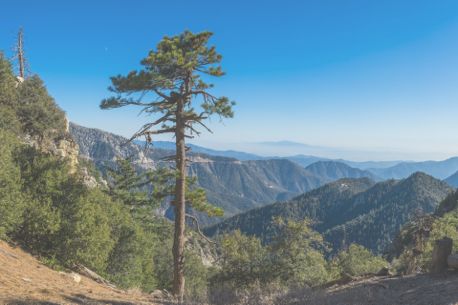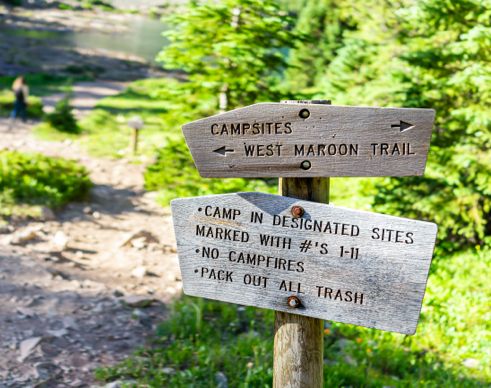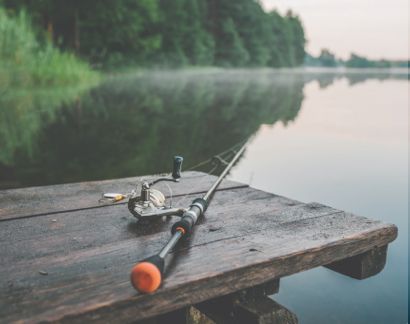Kootenai National Forest is located in northwest Montana and northeast Idaho, covering over 2.2 million acres. It is bordered by British Columbia, Canada, to the north and Idaho to the west. The forest features the Kootenai River and Lake Koocanusa, which flows through a gorge between the Purcell and Salish Mountains. The Ten Lakes Scenic Area, shaped by alpine glaciers, offers rugged terrain and numerous lakes for backcountry exploration.
Camping in Kootenai National Forest
You can camp inside the forest at one of the RV-friendly campgrounds. If you prefer camping near the Kootenai National Forest, you can look for top campgrounds in Montana. You can also explore BLM sites in Montana if you are travelling on a budget and nearby dumping stations to dispose of waste.
Campgrounds in Kootenai National Forest
Private Campgrounds Near Kootenai National Forest
Look for private RV campgrounds in nearby cities if you cannot find the perfect campground within the forest.
Campgrounds for Fishing and Water Activities
Free Campgrounds

Kootenai National Forest Hiking Trails
Hiking is one of the best things to do at Kootenai National Forest. You can find a suitable trail as per your experience and skill.
Easy Hikes for Beginners
Challenging Trails for Hikers
Lakeside Trails or Trails With The Best Views

-
Callahan Historic Trail #153
The Callahan Historic Trail follows the path of an old railroad line used during the early 1900s for mining and logging operations. The trail features trailside benches and stunning views of Callahan Creek and the King and Pulpit Mountains.
Length: 2 miles
Intensity: Easy
-
Berray Mountain West Trail #1028
This trail intersects with the Berray Mountain Trail #967 and offers hikers a shorter route to reach the summit of Berray Mountain. Hikers along this path find breathtaking vistas of the Cabinet Mountains and Scotchman Peaks Wilderness Areas. Also, a historic lookout tower built in 1965 still stands near the top of the mountain.
Length: 1.7 miles
Intensity: Difficult
-
China Rim/Flagstaff Trail #43
Follow this gentle trail through meadows bursting with wildflowers and up a slight ridge to the summit of Flagstaff Mountain. Stand at the summit and enjoy views of the Kootenai Valley, the Selkirk Mountains in Idaho, and the Purcell and Cabinet Mountains in Montana.
Length: 5.5 miles
Intensity: Moderate
-
#998 Big Eddy Trail
Visitors follow this steep wooded trail to the summit of Star Peak. Along the way, enjoy breathtaking views of the Clark Fork River Valley before arriving at Star Point Lookout. This was the first recorded lookout in Montana, and today, the original stone house still stands, keeping silent watch.
Length: 8.9 miles
Intensity: Difficult
-
#2 Old Highway 2 Interpretive Trail
Part of the old highway between the towns of Libby and Troy, the #2 Old Highway 2 Interpretive Trail leads visitors on a hike beside moss-covered trees and through open fields dotted with wildflowers. The trail also offers scenic views of the Kootenai River.
Length: 2.3 miles
Intensity: Easy
-
#731 Dixie Ridge Trailhead
Starting at Big Beaver Creek, this trail takes hikers to Dixie Summit before running along a ridgeline along the border between Montana and Idaho. Hikers on this trail will cross Big Beaver Creek. While this is usually an easy crossing, during peak run-off, it can be challenging.
Length: 3.1 miles
Intensity: Moderate
Activities in Kootenai National Forest
Here are some activities you can try during your stay in Kootenai National Forest.
The Stone Hill Climbing Area along the Koocanusa Reservoir offers a variety of climbs for all skill levels. With routes ranging from easy to moderate, it's perfect for intermediate climbers looking for a challenge.
Explore the forest and its rivers for a chance to pan for gold. This traditional activity lets visitors try their luck in streams and creeks, often in the areas where gold has been historically discovered.
Kootenai National Forest is an ideal spot for rockhounding and fossil hunting, offering diverse geological formations. Collecting specimens is a fun way to connect with the natural history of the region.
Geocaching and letterboxing are exciting treasure hunts using GPS devices. Geocaching involves finding hidden caches, while letterboxing includes stamping a logbook to mark your discovery of a hidden stamp.
Kootenai National Forest is home to a wide range of wildlife, including elk, moose, wolves, and grizzly bears. It's one of the best places in the U.S. to spot the rare woodland caribou and experience a diverse ecosystem.

-
Identifying Flora and Fauna

A forest of evergreens covers the bulk of the Kootenai National Forest, but visitors will have no difficulty spotting interesting and different plant life among the trees. A large grove of cedars is designated a scenic area, and huckleberry bushes dot the landscape. In the spring and summer, the hills and meadows bloom into riotous color with a carpet of wildflowers. A wide variety of wildlife also call the forest home. You won't have to venture far along a wilderness path to spot birds, deer, bears, wolves, and even wild caribou.
-
Fishing

Kootenai National Forest features some of the best fishing opportunities in Montana. Fish Lake Koocanusa to catch some kokanee salmon or catch some award-winning bass at the Noxon Rapids Reservoir. Drop your line into one of the many rivers or streams, and reel in one of several varieties of trout or catfish for dinner. If cold weather fishing is on the agenda, Kootenai National Forest offers several venues for ice fishing.
-
Geocaching

Geocaching is allowed at Kootenai National Forest but must be done outside the boundaries of designated wilderness areas. A geocache must not be commercial and must not disturb the natural landscape. Instead of digging a hole, leave and look for caches hidden behind trees or rocks.
-
Nature Watching

The Kootenai National Forest offers ample opportunities to experience the natural wonders of the area. Visit one of the many waterways for a morning of birdwatching. Keen-eyed observers might spy eagles, great blue herons, or osprey. Moose, deer, and caribou are often seen from trails in the backcountry, and peaks and ridgelines offer stunning vistas of the surrounding valleys and forests.
-
Stargazing

The Kootenai National Forest is open 24-hours per day and offers ample options for stargazing. The Kootenai Trail is one of the best places in the forest to watch the stars moving across the darkened Montana skies. With minimal light pollution from nearby small towns, the galaxy unfolds in sparkling splendor above. Stop at Lake Koocanusa for the best views of crystal clear stars.
How to get to Kootenai National Forest
Address: 31374 US-2, Libby, MT 59923
Fee: Entry fee $0
With over 2 million acres of nature to experience and explore, an RV trip is the perfect way to explore everything the Kootenai National Forest has to offer. Whether you crave the adventure of making your way up a rock face, need some quiet time by a lake, or are recharged by a hike through a field bursting with wildflowers, Kootenai National Forest is sure to spark your wandering spirit.
Fees in the Kootenai National Forest
While there is no general entry fee to access Kootenai National Forest, some activities do require a fee. There are some free campgrounds in the forest, but others require payment on a per-night basis. Some activities like water sports may require separate fees.
Frequently Asked Questions About Kootenai National Forest
Can you kayak, canoe, or raft in Kootenai National Forest?
Yes, you can kayak, canoe, and raft in Kootenai National Forest. The Bull Lake Area and Yaak Area both have sites for kayaking and canoeing. There are also several outfitters in the area that lead rafting trips through rivers in the forest.
What is the best time to visit Kootenai National Forest?
Summer is the best time to visit Kootenai National Forest. The weather is warm, and most of the forest areas are accessible in summer. The fall is beautiful, thanks to autumn foliage, but water in some areas may be turned off for winter and other amenities may be unavailable.
Is Kootenai National Forest open all year round?
Yes, Kootenai National Forest is open all year-round. Some areas of the forest may not be accessible in winter, due to deep snow. However, there are plenty of fun winter activities to try in the forest including snowshoeing and snowmobiling.
Is there a limit to how long you can camp in Kootenai National Forest?
Yes, there is a limit to how long you can camp in Kootenai National Forest. Campers can stay up to 14 days in one spot, and they must move to a location at least five miles away to set up camp again.
What is the closest town to Kootenai National Forest?
Libby, MT is one of the closest towns to Kootenai National Forest. Other nearby towns include Troy and White Haven.







